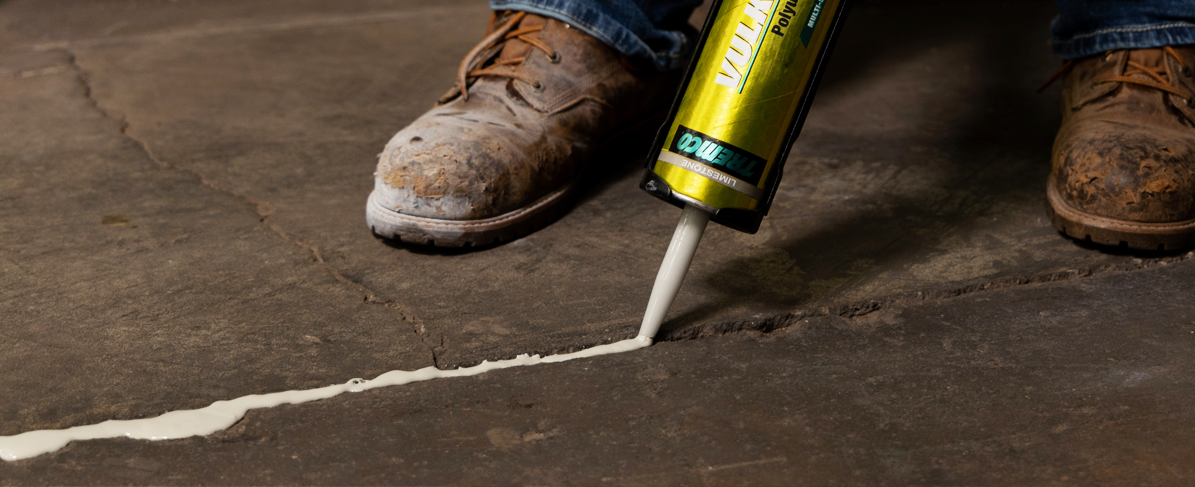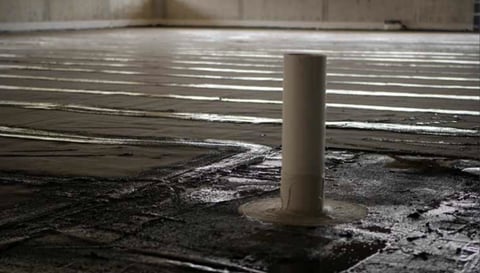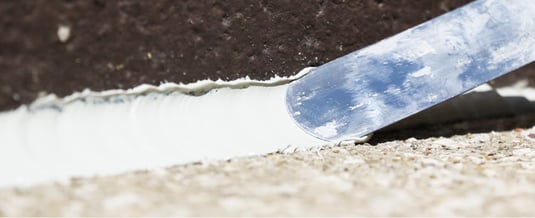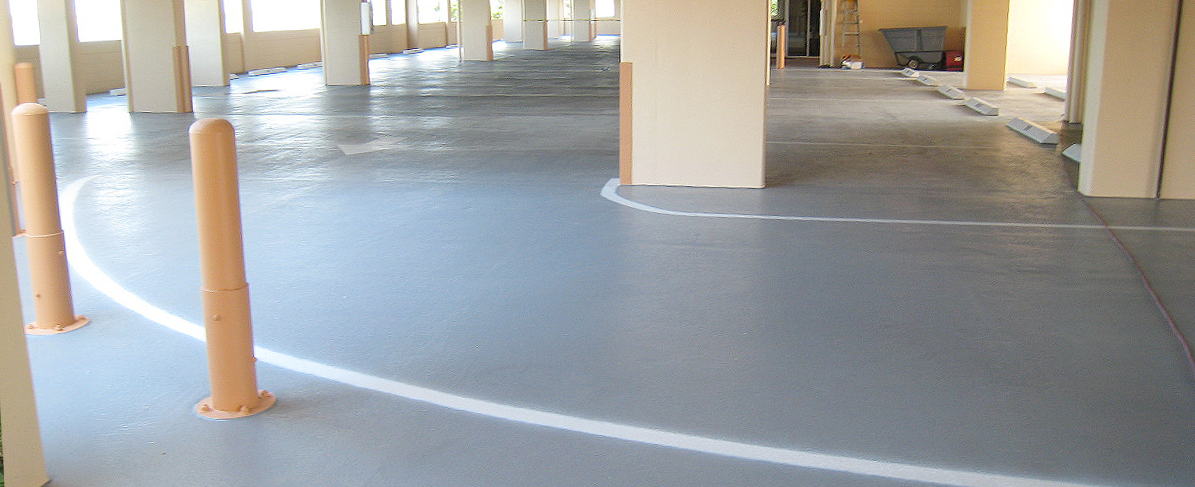When applied correctly, the best caulk for waterproofing concrete will effectively seal gaps in the foundation and between the foundation and wall to stop water infiltrations. Moisture in the foundation can widen existing cracks, causing expensive damage that, in extreme cases, could threaten the structure's integrity. To avoid these potential issues, here is a list of common sealant application errors and how to avoid them, as well as considerations to guide your concrete sealant selection.
What Are the Common Application Errors of Sealants on Concrete?
Application errors of waterproof sealants on concrete can cause sealant failures, which can lead to water and air infiltration and subsequent structural damage or mold growth. Common errors during sealant application include:
1. Not adequately preparing the substrate
Dust, debris, and contaminants can impact the curing and adhesion of the sealant to the concrete. Contractors often use abrasive measures (like a wire brush) and water to prepare concrete joints so before applying the sealant, you must:
-
- Sufficiently clean out the joints to avoid the sealant adhering to the dust instead of the concrete substrate.
- Remove the liquid with a fast flash solvent. Most polyurethanes must cure before becoming moisture intolerant. Exposing sealants to moisture can lead to a chemical reaction, resulting in bubbling and foaming. Polyurethanes also don't permit moisture vapor to evaporate out of the concrete, which can lead to problems on some exterior concrete surfaces like driveways.
- Use compressed air to remove remaining dust, contaminants, debris, and water.
- Sufficiently clean out the joints to avoid the sealant adhering to the dust instead of the concrete substrate.
2. Not fixing damaged sealant along the bond line
To ensure consistent sealant adhesions, contractors must inspect the bond lines of the sealant of the concrete joints and fix any defective sections.
3. Improper temperature applications of waterproof caulking for concrete
Successful application of the waterproof sealant requires warm concrete. Applying sealant to concrete in cold temperatures can lead to improper sealant curing or delamination caused by freeze/thaw cycling.
What to Consider When Selecting a Sealant Product for Concrete
Selecting the best waterproof caulking for your concrete project depends on what you are trying to seal, the composition of the material, the finish, and the chemistry of the product. The suitable sealant for your concrete project should waterproof the surface to protect it from moisture and temperature changes.
1. Identify Thermal Movement of the Joints
The sealant must accommodate the anticipated movement of the joint. To combat cracks in concrete, caused by the natural expansion and contraction during temperature fluctuations, concrete specialists will space periodic joints in the concrete, as determined by engineers. The sawed, grooved, or formed control joints in the concrete allow the movement to happen safely without cracking. Therefore, it is critical to select a flexible sealant that can span the width of the joints and withstand the movement.
2. Determine the Concrete’s Application
-
- Will the concrete’s application be subjected to high foot and car traffic?
For concrete applications subject to heavy traffic, select a sealant tested to ASTM C920. For high- traffic exterior concrete, such as in a parking garage, select a durable sealant that is proven to perform even in the presence of de-icing chemicals. - Will the sealant be immersed in water?
For concrete application immersed in water, use a polyurethane sealant. It can handle constant water better than a silicone sealant. - Will you paint the application after curing?
Painted applications often require the use of a polyurethane sealant. Silicone technologies are often not paintable, as the paint will not bond with the sealant and may flake off with any movement or abrasion. - Look at the concrete’s age and condition, along with if it’s damp or green concrete.
If there is an irregular joint design or if the joint jets off in one direction, a pourable, self-leveling sealant may be easier to apply. For damp or green concrete, polyurethane sealants are recommended.
Some polyurethane sealants can adhere to damp or green concrete. As the damp or green concrete cures, it releases moisture into the air. Polyurethane sealants use moisture to facilitate the curing process. In addition, long-lasting aliphatic polyurethane sealants provide ultraviolet, chemical, impact, and abrasion resistance. Furthermore, they offer excellent heat, cold, and thermal shock tolerance. - Is a primer required?
Some sealants or caulking need a primer application to ensure a consistent and strong adhesion to the clean, dry substrate. Contact the manufacturer or check the sealant datasheet to determine if the sealant requires a primer for the specific substrate. Generally, silicone and non-porous substrates require a primer.
- Will the concrete’s application be subjected to high foot and car traffic?
3. How to Apply Sealants on Concrete for Renovation Projects
To restore a sealant joint, you can reseal the joint with a new, compatible sealant, or remove the existing sealant entirely and then apply a new sealant. Reference the Tremco Restoration Guide for step by step instructions on these processes.

Choosing the Best Waterproof Caulking for Concrete
To ensure the long-term integrity of your sealant application, you must understand the project-specific conditions, such as application temperature, joint width, anticipated movement, and exposure to traffic and the elements. These will determine the most suitable sealant technology and the application instructions to follow.
Check out this article for more information on choosing the best waterproofing caulking and the most effective way to apply it to your concrete project.







